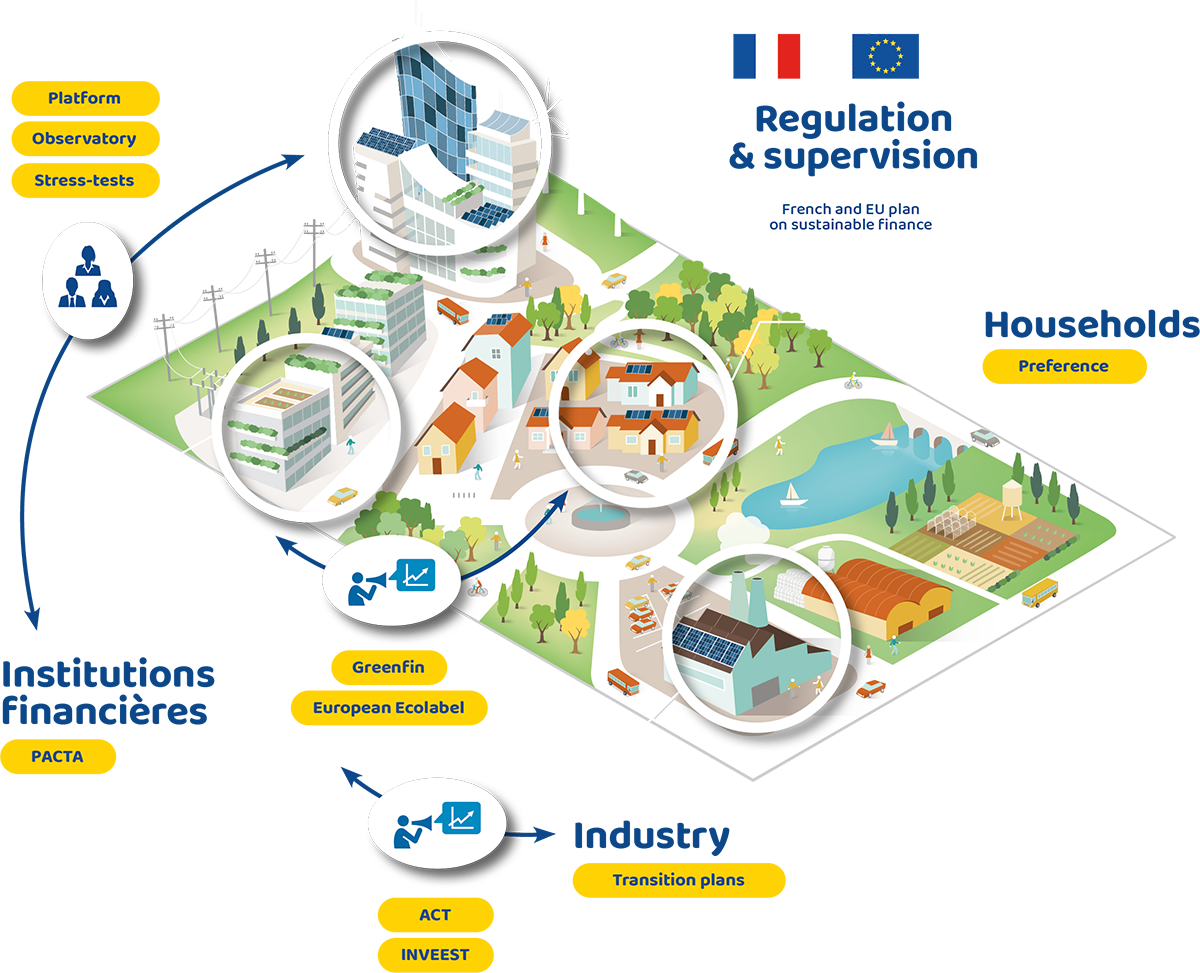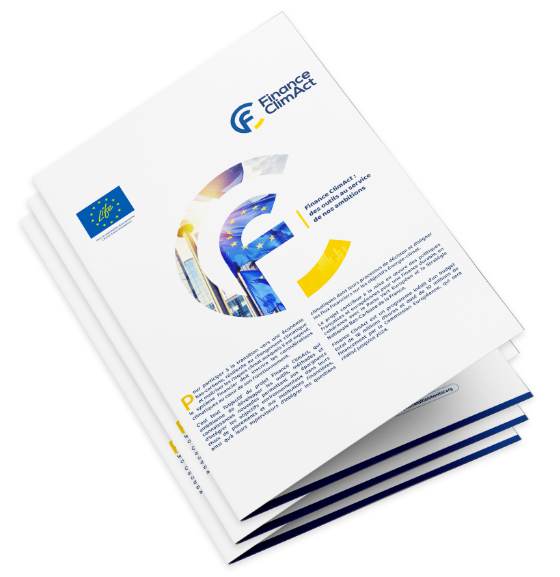Finance ClimAct :
tools that fits our ambitions
The project and its objectives
The financial system needs to put climate considerations at the heart of its operations, in order to participate in the transition to a low carbon and climate-resilient economy while managing the climate risks to which it is exposed. In order to achieve this objective, the Finance ClimAct project will develop the tools, methods and new knowledge necessary (1) for savers to integrate environmental objectives into their investment choices, and (2) for financial institutions and their supervisors to integrate climate issues into their decision-making processes and to align financial flows with energy climate objectives.
The project contributes to the implementation of French and European policies for sustainable finance, in line with the European Green Pact and France’s National Low Carbon Strategy.
Finance ClimAct is an unprecedented programme
with a total budget of
18M€,
including €10 million in funding
from the European Commission,
which will run until 2024.
Project targets

Work streams
The ACT initiative
Assessing Low Carbon Transition
Description : ACT proposes sectoral methodologies as a climate accountability tool to assess corporate strategies and actions against the mitigation targets of the Paris’ Accord.
For who ? : The companies
The INVEEST training program
Description : A programme to upgrade the skills of 1,000 professionals (bank advisers, financial directors, chartered accountants) in the field of energy efficiency and low-carbon energy financing in industrial sectors.
For who ? : The companies
Financial Institutions
Industry transition
plans
Description : A support tool for prospective dialogue in the 9 most emissive industrial sectors (cement, steel, aluminium, ethylene, chlorine, ammonia, sugar, paper-cardboard, glass), built in consultation with sectoral stakeholders. They describe the technological choices consistent with France’s energy-climate objectives for 2050, the associated investment needs and the changes in the job market.
For who ? : The companies
PACTA program
Description : PACTA is a free and open source analysis tool that allows users to study the alignment of their portfolios with climate benchmarks and see how to mobilize financial flows to align them with the Paris Agreement. It also includes a stress–test module that can be used by supervisors and their regulated entities. Already used by more than 1,000 institutions, PACTA is available for both investment and loan portfolios.
For who ? : Financial Institutions
Climate Transparency Hub
Description : A tool for monitoring and identifying good practices in climate reporting, the platform covers all financial institutions (institutional investors, asset managers and banks) subject to regulatory obligations and makes this information available to the greatest number of people, in a centralized manner. It will also make it possible to benchmark best practices with a view to harmonising them and enhancing their quality and comparability.
For who ? : Financial Institutions
The Sustainable
Finance Observatory
Description : This tool will compile data aggregated for various segments within Paris financial centre regarding four areas: financing the transition to a low-carbon economy, coal divestment, responsible asset management and responsible products. Secondly, it will allow for the monitoring, on the basis of voluntary declaration by stakeholders, of individual commitments made by financial institutions for a more sustainable finance, with a focus on fighting climate change. Its objective is to contribute to a better understanding and assessment of the gradual transformation of the financial sector.
For who ? : Financial Institutions
Climate
Stress-tests
Description : Contribution to the design of tools to measure the physical and transition climate risks to which financial institutions are exposed via their portfolios: feedback on the French pilot exercise, publication of scientific articles and implementation of climate scenario analysis modules.
For who ? : Financial Institutions
Development and
promotion of labels
Description : As a tool for guiding savings, labels provide clarity and environmental credibility to financial products offered to retail investors. Based on the monitoring of labelled products and an assessment of their impact in terms of achieving energy-climate goals, the label framework will be revised regularly. The deployment of labels will be accompanied by a campaign to promote ecolabelled financial products.
For who ? : The investors
Investors
Preferences
Description : An online tool allowing savers to express their environmental preferences and promote the corresponding financial products. The aim is to integrate sustainability considerations into financial advice, which requires a good understanding of individual preferences and a monitoring of financial advisors’ practices.
For who ? : The investors




